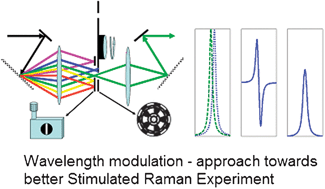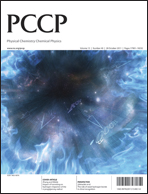Wavelength-modulated femtosecond stimulated raman spectroscopy—approach towards automatic data processing
Abstract
A new wavelength modulator based on a custom-made chopper blade and a slit placed in the Fourier plane of a pulse shaper was used to detect explicitly the first derivative of the time-resolved femtosecond


 Please wait while we load your content...
Please wait while we load your content...